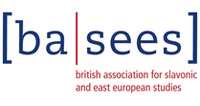

|
Sun7 Apr01:20pm(20 mins)
|
Where:
Seminar Room
Presenter:
|
The present research aims to investigate the malleability of textual patterns in Hungarian translations of Ulysses, outlining three primary areas of inquiry: the linguistic levels at which Joyce engages with Hamlet quotations; the concept of “unretranslatability” in these segments; and the nuances of (re-)retranslations. The research posits that when a first translation successfully reproduces a Hamlet segment, preserving the same effect as in the source text, it narrows down the options for alternative translation possibilities to such an extent that it may lead to unretranslatability. The focus of the research will be on the manifestation of intertextual unretranslatability, necessitating a comparative-contrastive analysis of Hungarian translations of Ulysses.
The research employs relevant excerpts from various Hungarian translations to support the unretranslational hypothesis, as formulated by Van Poucke (2020). This hypothesis suggests that when an initial translation successfully reproduces a segment using foregrounding techniques and preserves the identical impact conveyed in the source text, it can significantly limit the possibilities for alternative translations, potentially leading to unretranslatability.
The current findings indicate that Hungarian translators of Ulysses primarily used the canonical translation of Hamlet by János Arany to render the Hamlet paraphrases – aiming to evoke the same emotional and cultural embeddedness in the target language as Joyce employed in the source text.
The subsequent phase of the research will concentrate on the most recent Hungarian translation of Ulysses, with a particular emphasis on the techniques and strategies explored from the perspective of the "unretranslational hypothesis." Additionally, attention will be given to the structural and textual factors, among others, that previous translators failed to incorporate into the Hungarian translation.
The examination of how the envisioned literary unretranslational hypothesis is realized in terms of intertextualities in Ulysses may vary between overlapping textual schemes and segments. These textual patterns can reduce the translational discrepancies amongst Hungarian (re)translations of Ulysses.